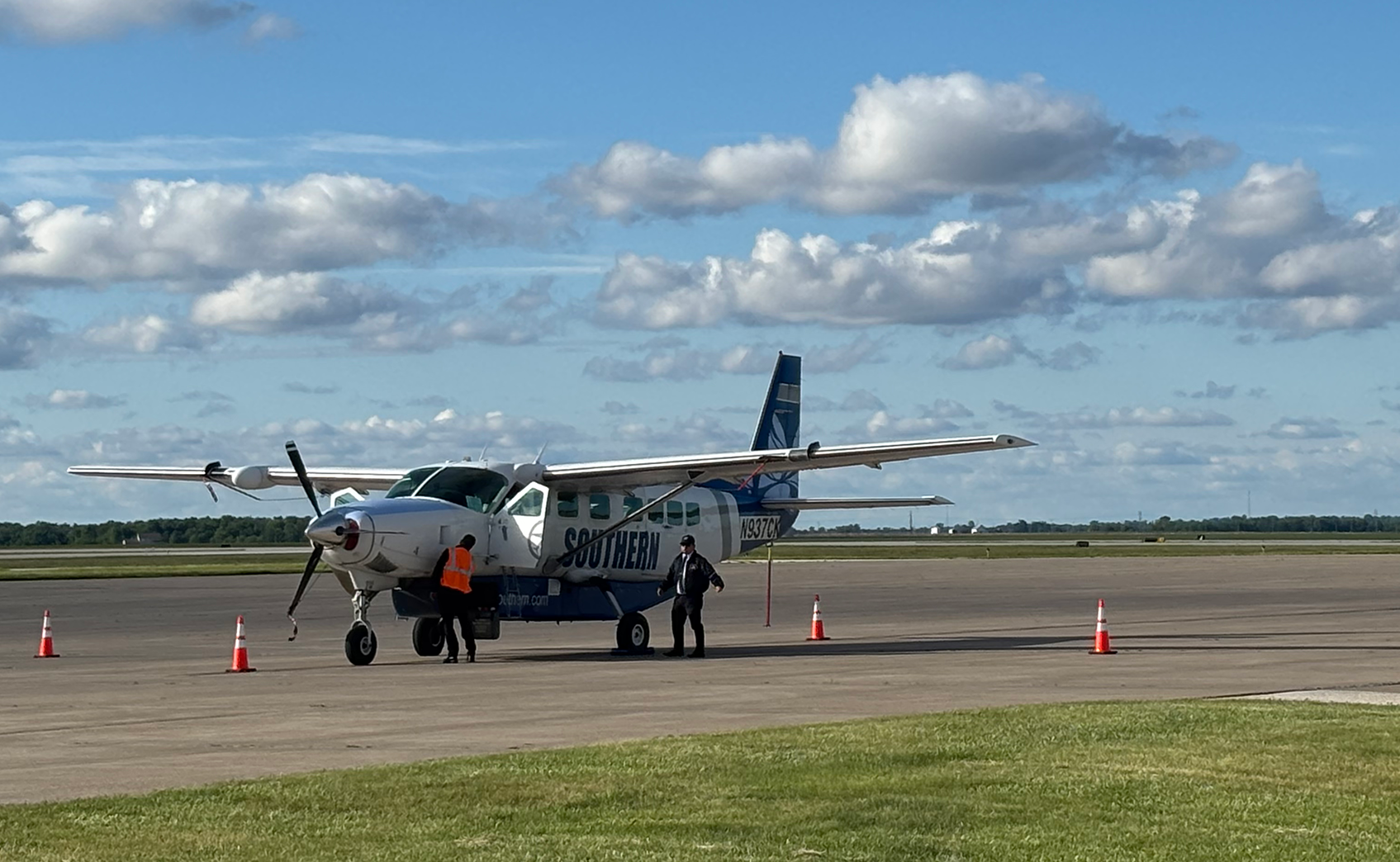Quincy Regional Airport unlikely to be affected by federal budget cuts to EAS program — for now

QUINCY — Just as the City of Quincy seemed to have sorted out the essential air service (EAS) provider ordeal at the Quincy Regional Airport, another potential disrupter has arisen.
Funding for the EAS program itself is up in the air.
“(The Department of Transportation) can’t tell me beyond a doubt that we’re not in jeopardy,” Bill Lantz, director of the Quincy Regional Airport, said last week. “They told me I should be relaxed and not worried about it, so at this time, I’m not anticipating any impact.”
President Donald Trump’s budget request for fiscal year 2026 outlined $308 million in cuts to the program, citing “out of control” spending that “funnels taxpayer dollars to airlines to subsidize half-empty flights from airports that are within easy commuting distance from each other, while also failing to effectively provide assistance to most rural air travelers.”
If approved, the program would lose more than half of its funding relative to the 2025 budget.
The program’s fiscal allocations have steadily increased since the turn of the century but have ballooned in recent years, due in part to rising operational costs. Discretionary appropriations for the program have nearly tripled since 2021 after several years of relatively similar contributions from each funding source, increasing from $142 million in 2021 to $423 million in 2025.
According to the U.S. Department of Transportation (DOT), the EAS program was established after the Airline Deregulation Act (ADA) was passed in 1978, which allowed airliners to set their fares and choose their routes based on commercial profitability rather than community need.
“To ensure that smaller communities would retain a link to the National Air Transportation System,” EAS was created.
To make up for low traffic in such communities, federal subsidies are provided to the airlines that service them. A competitive bidding process keeps subsidy costs low. The DOT awards contracts based on an airline’s reliability, partnerships with larger airlines and community marketing proposals. Preferences of the elected officials of each community are also taken into account.
The EAS is providing, as of 2024, subsidies or grants to 177 communities throughout the U.S. and Puerto Rico. The program is funded by Congressionally-approved discretionary appropriations and fees paid by foreign aircraft for flying in U.S. airspace without landing, known as mandatory overflight fees.
Lantz said an average of 10 enplanements per day, or 3,650 passengers per year, must be maintained for a community to be eligible for the program. Subsidy rates per passenger must be under $650 for airports less than 175 miles from the nearest hub airport. Quincy Regional is roughly 110 miles from St. Louis Lambert International.
Lantz said the size of the aircraft serving Quincy determines the number of flights the government will subsidize. Quincy’s current EAS provider, Southern Airways, uses a nine-seat aircraft, so more flights are subsidized to achieve the minimum enplanement requirements.
EAS funding goes directly to flights, meaning that without it, fewer flights would be available for area fliers. A loss in funding wouldn’t impact the airport’s operational budget.
“When I have a tendency to get a little nervous about this stuff is when they start talking about cutting the formulas,” Lantz said.
Reforms to EAS eligibility criteria were a goal of the first Trump administration, per previous DOT budget highlight reports. Trump’s budget proposal states the cuts will be achieved “by proposing a mix of reforms to adjust eligibility and subsidy rates to help rural communities’ air transportation needs in a more sustainable manner.”
Previous DOT budget highlight reports indicate that reforming EAS eligibility criteria was a goal of the first Trump administration, with a 2020 report stating that “communities that are relatively close to larger airports” would be subject to reform.
Lantz said he would be nervous if the minimum distance from the nearest hub airport were increased, but he’s said been advised by his DOT contact “to rest easy.”
“Right now, I feel very secure in where we’re at,” Lantz said.”I feel very good about it, and I would encourage the citizens of Quincy and the surrounding communities to feel the same way.”
At the Quincy City Council’s meeting Monday night, Mayor Linda Moore said the city is still awaiting contract approval from the DOT for its new EAS provider, Tennessee-based Contour Airlines. A response is expected by late June.
According to its proposal to the city, Contour will provide 12 flights per week from Quincy to Chicago on a 30-seat Embraer jet, with fares ranging from roughly $40 to $60. The company is ranked third in the country for on-time performance. Moore said service is likely to begin August 1.
The budget narrowly passed Thursday morning through the House by a 215-214 vote, with three Republicans joining all Democrats in voting against it. It’s anticipated to pass in the Republican-held Senate, though modifications are expected. The current version of the bill outlines significant cuts for Medicaid and SNAP, among others.
The Wharton School of the University of Pennsylvania, Trump’s alma mater, estimated the budget to increase the primary deficit, which doesn’t include interest, by more than $3 trillion during the next 10 years.
Miss Clipping Out Stories to Save for Later?
Click the Purchase Story button below to order a print of this story. We will print it for you on matte photo paper to keep forever.

